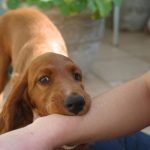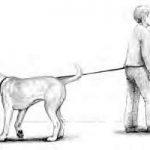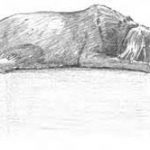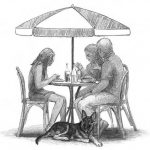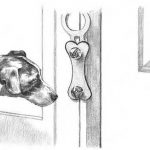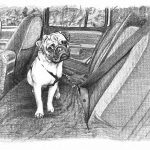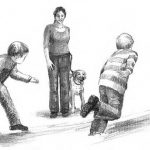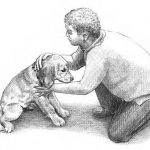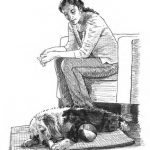Profiling the Non-Sporting Group
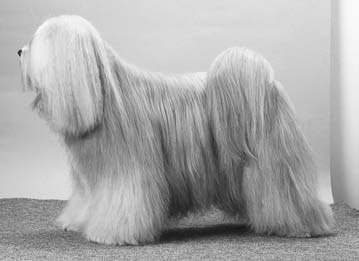

In This Chapter
- Defining a diverse group
- Championing some consummate companions
- Finding a breed to suit everyone’s needs
Okay, so what’s the deal with the Non-Sporting Group? Is it truly a group made up of non-sporting types, or is it a catchall category of groupless pooches?
In truth, the answer may be a bit of both. The Non-Sporting Group was created back in the early days of dog shows, when all the other breeds were neatly classified in the Sporting Group. Now that we have several other groups to choose from, each of these Non-Sporting breeds could probably fit — or almost fit — into another group. But what’s done is done, and there they remain.
Members of this group are wonderfully diverse, with great variety in appearance, size, temperament, and conformation. The group’s 17 breeds have backgrounds that can be traced to retrievers, mastiffs, spaniels, Nordic dogs, and more. As far as origins go, the breeds came from all over the globe — the Shiba Inu from Japan, the Tibetan Spaniel from the Himalayas of Tibet, the Keeshond from the Netherlands, and the Boston Terrier from, well, Boston.
These days most of the Non-Sporting breeds dedicate themselves to careers as devoted companions, but going back to their roots, these dogs were workers of all types: ratters, guard dogs, retrievers, performers, fighters, hunters, carriage dogs, herders. Two were lapdogs extraordinaire (a cushy job, for sure), and one was even a “good luck” companion.
Because they come from such different stock and were developed for such different purposes, the breeds in the Non-Sporting Group are quite distinct in appearance and character. Talk about a smorgasbord of personalities, not to mention a cornucopia of ears, tails, and coat types!
American Eskimo Dog
History/Evolution: A member of the Spitz family, the American Eskimo Dog, or “Eskie,” descended from a variety of German spitz, with influences from other spitzes such as the Keeshond and Pomeranian. Known for its beauty, intelligence, and agility, the Eskie was an extremely popular performer in traveling circuses throughout the U.S. Today’s Eskies are primarily companion dogs, although some compete in conformation, obedience, and agility.
Size: Tiny to medium. Toy 9 to 12 inches, Miniature 12 to 15 inches, Standard 15 to 19 inches.
Color: White, white with biscuit cream.
Temperament: Intelligent, alert, and friendly; trainable and willing to please. Protective and wary of strangers. Not the best choice if there are children or other pets.
Energy level: High, especially with smaller sizes; mellows with age.
Best owner: Active owner in a home with a fenced yard.
Needs: Daily exercise, fenced yard, patient housetraining, cool climate; brushing and combing twice weekly, more often when shedding.
Life expectancy: 12 to 15 years.
Photograph © Jean Fogle
Bichon Frise
History/Evolution: Originating in the Mediterranean area in the 13th century, the Bichon Frise is believed to be the descendant of large water spaniels and small, often white, dogs. Spanish sailors traded the cheerful breed and transported dogs from continent to continent, and Bichons found their way into French royal courts and Spanish paintings. In the late 1800s, the breed fell out of favor, but it survived by performing with street artists and in circuses and fairs. Bichons make excellent pets.
Size: Small; 91⁄2 to 111⁄2 inches, 14 to 16 pounds.
Color: White.
Temperament: Playful, cheerful, friendly, and affectionate. Good with children, other dogs and pets, and strangers. Doesn’t like to be alone. Some bark a lot.
Best owner: Aspiring pet groomer.
Needs: Daily exercise, attention, patient housetraining, intense grooming (daily brushing to prevent mats, occasional trims).
Life expectancy: 12 to 15 years.
Photograph © Jean Fogle
Boston Terrier
History/Evolution: An all-American dog, the Boston Terrier was developed in the 1800s in Boston, the result of a cross between an English Bulldog and an English Terrier; the Bulldog (named Hooper’s Judge) became the ancestor of nearly all true Bostons. The breed is nicknamed “the American gentleman” because of its characteristically gentle disposition. Highly intelligent, the Boston Terrier is an unrivaled companion, ranking as one of the most popular breeds since the early 1900s.
Size: Small; 15 to 25 pounds.
Color: Brindle, seal, or black, all with white markings.
Temperament: Friendly, lively, gentle. Intelligent, well mannered, and playful. Reserved with strangers and other dogs. Some bark.
Energy level: Moderate to high, mellows with age.
Best owner: Active owner with plenty of time for companionship.
Needs: Daily exercise, fenced yard, positive reinforcement, low heat and humidity, human interaction, occasional brushing, patience with snoring.
Life expectancy: 10 to 14 years.
Photograph © Jean Fogle
Bulldog
History/Evolution: Bulldogs are so gentle it’s hard to imagine the life these dogs led in their early history, when bull baiting was popular. The dogs’ role was to attack the bull, grabbing it by the nose. Fortunately, dog fighting became illegal, and breeders bred out ferocity while retaining the Bulldog’s distinctive physical characteristics. The efforts paid off within a few generations; today the Bulldog’s lovable dispositions and adorable mugs make it one of the most popular breeds.
Size: Medium to large; 40 to 60 pounds.
Color: Red brindle, brindle, white, red, fawn, and piebald.
Temperament: Kind, amiable, mellow, comical. Willing to please but can be stubborn. Forms bonds and is good with children.
Energy level: Low.
Best owner: Mellow family or individual.
Needs: Daily exercise (a short walk will do), air conditioning, motivational training, tolerance of drooling and snoring, daily cleaning of facial wrinkles.
Life expectancy: 8 to 10 years.
Photograph © Jean Fogle
Chinese Shar-Pei
History/Evolution: The Chinese Shar-Pei goes back to ancient China, when the dogs were general farm dogs, used for hunting, herding, and guarding. The Chinese believed the breed’s characteristic scowl and black pigmented mouth would scare off evil spirits. Although most dogs were eliminated after China became communist, some Shar-Peis survived in other countries. American fanciers rescued the breed from extinction, and the breed is one of the most recognizable in the U.S.
Size: Medium; 18 to 20 inches, 45 to 60 pounds.
Color: Any solid color.
Temperament: Dignified, sober, self-assured, self-possessed. Independent and stubborn. Devoted and protective; suspicious of strangers and aggressive with other dogs.
Energy level: Low to moderate.
Best owner: Confident owners with previous training experience.
Needs: Daily mental and physical exercise, training and socialization, weekly brushing, attention to ears and wrinkles, regular nail clipping.
Life expectancy: 8 to 12 years.
Photograph © Jean Fogle
Chow Chow
History/Evolution: Though its origins are unclear, the Chow Chow can be traced back to ancient China. An all-purpose working dog, the powerful and lionlike dog was used for guarding, hunting, and herding. The name Chow Chow was adopted after the breed was brought to England, and its popularity rose after Queen Victoria took an interest. Like the Shar-Pei, the Chow Chow is known for its blue/black tongue and makes an extremely protective and loyal companion.
Size: Medium, 17 to 20 inches; females 50 to 65 pounds; males 60 to 75 pounds.
Color: Red, black, blue, cinnamon, and cream.
Temperament: Serious, independent, dignified; devoted to family, not demonstrative. Suspicious of strangers and aggressive with other dogs.
Energy level: Low.
Best owner: Confident owner who doesn’t need a cuddly canine.
Needs: Daily exercise (casual walks), low heat and humidity, socialization, firm training, daily brushing for rough coats and weekly for smooth coats (more when shedding).
Life expectancy: 8 to 12 years.
Photograph © Jean Fogle
Dalmatian
History/Evolution: The Dalmatian’s origin is a mystery, but we do know that the breed served as war dogs, sentinels, shepherds, ratters, retrievers, and even circus dogs. The Dalmatian found its true calling as a coach dog in Victorian England, protecting horses and adding a touch of style. When the auto arrived, the Dalmatian continued as a coach dog for horse-drawn fire engines. Movies with Dalmatians have spurred their popularity, but most people are unprepared for the training involved.
Size: Medium to large; 19 to 23 inches, 45 to 60 pounds.
Color: White with black or liver spots.
Temperament: Outgoing, energetic; daily exercise ensures better manners. Good with children when raised with them. Reserved with strangers; can be aggressive with dogs.
Energy level: High.
Best owner: Active owner in a suburban or rural home.
Needs: Daily strenuous exercise, leash, fenced yard, consistent training, lots of attention and companionship, soft bedding, regular brushing.
Life expectancy: 12 to 14 years.
Photograph © Jean Fogle
Finnish Spitz
History/Evolution: Originally known as the Finnish Cock-Eared Dog and the Finnish Barking Bird Dog, the Finnish Spitz excelled at hunting birds and small game; hunters relied on the vocal breed to alert them to prey. Although interbreeding threatened the breed’s survival, two Finnish sportsmen were able to salvage the “Finkie.” More of a companion in the U.S., the breed is still used for hunting in Finland. With its erect years and plumed tail, the Finnish Spitz resembles a lively red fox.
Size: Medium; females 151⁄2 to 18 inches, 23 pounds; males 171⁄2 to 20 inches, 29 pounds.
Color: Shades of golden red.
Temperament: Active, lively, friendly, eager; good with children but often devoted to one person. Aloof with strangers, aggressive with strange dogs. Barks.
Energy level: Moderate.
Best owner: Active owner or hunter.
Needs: Daily exercise, leash, fenced yard, human interaction, reward training, tolerance of barking, brushing twice a week (more when shedding).
Life expectancy: 12 to 14 years.
Photograph © Taru Korrensuo
French Bulldog
History/Evolution: The French Bulldog probably owes much of its good looks to the English Bulldog. English lacemakers fancied toy versions of the bulldogs, taking their dogs with them when they were displaced to France. With their small size and “bat ears,” the little bulldogs became popular; in the late 1800s, they became known as French Bulldogs. The clownish breed continues to be prized for its affectionate nature and even disposition.
Size: Small; 11 to 14 inches, 20 to 28 pounds.
Color: A variety — often brindle, cream, black-masked fawn, and pied.
Temperament: Amiable, sweet, adaptable, well behaved. Affectionate and cuddly. Alert and active, but not boisterous or barky.
Energy level: Moderate.
Best owner: Senior citizen or family.
Needs: Minimal daily exercise, leash, tolerance of drooling and snoring, cleaning of facial wrinkles, weekly brushing, low heat and humidity.
Life expectancy: 9 to 11 years.
Photograph © Jean Fogle
Keeshond
History/Evolution: One of the spitz breeds, the Keeshond has a history that can be traced to Holland in the 1700s, where it served as a watchdog on the barges and riverboats of the Rhine River. The breed, named for Kees de Gyselaer, the leader of the Dutch Patriot party, became a symbol of that party. Although many of the dogs were disposed of when the party lost, the breed survived, aided by farmers and boatmen. The Keeshond is now the national dog of Holland.
Size: Medium; females 17 inches, 35 pounds; males 18 inches, 40 to 45 pounds.
Color: Gray, black, and cream.
Temperament: Outgoing, friendly, intelligent, affectionate; thrives in a family. Alert but a friend to all; good with children and other dogs.
Energy level: Medium.
Best owner: Family in a home with a backyard.
Needs: Daily moderate exercise, companionship, brushing once or twice a week and more when shedding.
Life expectancy: 12 to 15 years.
Photograph © Jean Fogle
Lhasa Apso
History/Evolution: The Lhasa Apso originated in Tibet’s Himalayan Mountains near the city of Lhasa. The bold, hardy dogs served as watchdogs in Buddhist monasteries; Buddhists believed that the souls of lamas entered the dog’s bodies when they died. The breed was first brought to the U.S. around 1930, as gifts of the 13th Dalai Lama. With a cloak of hair that parts down the back from head to tail, the Lhasa is not a breed for those who don’t care for grooming.
Size: Small; 10 to 11 inches, 11 to 18 pounds.
Color: All.
Temperament: Independent, alert, bold; stubborn but trainable. Content after exercise. Good with older children; reserved with strangers.
Energy level: Low to medium.
Best owner: Dog groomer in training.
Needs: Daily exercise, leash, early socialization and training, dedicated grooming (brushing every or every other day).
Life expectancy: 12 to 14 years.
Photograph © Isabelle Francaise
Lowchen
History/Evolution: The Lowchen’s history began about 400 years ago, most likely in Germany, where the breed served as a foot warmer and companion to ladies of the court. The name means “little lion dog” in German; the breed’s trademark is its traditional lion trim, with the coat left untrimmed on the forequarters (the mane) and clipped close on the hindquarters. Although the breed nearly disappeared in the 19th century, dedicated breeders ensured its continued existence.
Size: Small; 12 to 14 inches, 12 to 18 pounds.
Color: Any.
Temperament: Affectionate, lively, devoted, outgoing, inquisitive. Intelligent, highly trainable. Alert; may bark or dig a lot.
Energy level: Medium.
Best owner: Retiree or quite family.
Needs: Daily exercise, mental challenges (obedience, agility), plenty of attention; brushing or combing every other day, clipping.
Life expectancy: 14 to 16 years.
Photograph © Isabelle Francaise
Poodle (Standard and Miniature)
History/Evolution: Today’s Poodles were developed in Germany as water retrievers; the trademark poodle clip was designed by hunters to help the dogs move through the water, the remaining hair left on to keep vital organs warm. The breed, which became popular in France, comes in three varieties: Standard (the oldest), Miniature, and Toy. The Poodle’s low-shed coat may reduce allergic reactions but requires extensive grooming. Poodles are one of the top ten most popular breeds.
Size: Small and large; Miniature 10 to 15 inches, 12 to 20 pounds; Standard 22 to 27 inches, 40 to 80 pounds.
Color: Blue, gray, silver, brown, cafe-au-lait, apricot, cream
Temperament: Miniature is playful, responsive, obedient, devoted; good with children, may bark a lot. Standard is intelligent, obedient, active, playful; good with older children.
Energy level: High.
Best owner: Active owners with dedication to grooming.
Needs: Daily exercise (more for Standards), mental challenges (obedience), leash, fenced yards, companionship, daily grooming plus clipping and scissoring every five weeks.
Life expectancy: Miniature, 14 to 16 years; Standard 10 to 13 years.
Photograph © Jean Fogle
Schipperke
History/Evolution: It’s possible that this bold dog originated in Belgium, a smaller version of a black Belgian Sheepdog. Schipperke dogs worked as watchdogs and ratters on river barges, where the breed likely got the name Schipperke, after the Flemish word schip, meaning “boat.” Known for its mischievous expression, bold nature, and watchdog qualities, the Schipperke does well with supervision and training. Enjoys conformation, agility, and obedience competitions.
Size: Small; females 10 to 12 inches, males 11 to 13 inches; less than 18 pounds.
Color: Black.
Temperament: Active, confident, curious. Interested in everything, faithful watchdog; protective, reserved with strangers. May bark.
Energy level: High.
Best owner: Active owner with time for training.
Needs: Daily exercise, mental challenges, leash, fenced yard, patient housetraining, air conditioning, weekly brushing (more during sheds).
Life expectancy: 12 to 15 years.
Photograph © Jean Fogle
Shiba Inu
History/Evolution: The Shiba Inu is the smallest and perhaps oldest of the six dog breeds native to Japan. Of Spitz heritage, the Shiba was originally developed for hunting small game and boar. Although the bombing raids of World War II and distemper nearly caused the breed to die out, bloodlines were interbred to produce the breed as it is known today. Alert watchdogs and adaptable companions, the Shiba Inu has established itself as the number-one companion dog in Japan.
Size: Small to medium; females 131⁄2 inches to 151⁄2 inches, males 141⁄2 inches to 161⁄2 inches; 18 to 25 pounds.
Color: Red, red sesame, black/tan, black sesame, and brindle; may have white markings.
Temperament: Bold, spirited, headstrong. Adaptable and well mannered if properly exercised. Reserved with strangers; an excellent watchdog.
Energy level: Moderate.
Best owner: Active owner in a rural or suburban home.
Needs: Daily vigorous exercise, leash, fenced yard, early and continuing obedience training, socialization, brushing once a week.
Life expectancy: 12 to 15 years.
Photograph © Jean Fogle
Tibetan Spaniel
History/Evolution: Originating in Tibet in ancient times, Tibetan Spaniels were prized as pets and companions in Tibetan monasteries. Like the other two Tibetan breeds — the Lhasa Apso and Tibetan Terrier — the Tibbies were highly valued. The lionlike dogs were excellent watchdogs and would sit on monastery walls and bark when strangers or wolves approached. Tibbies are popular primarily in Tibet but are found in conformation, obedience, and agility rings in the U.S.
Size: Small; 10 inches, 9 to 15 pounds.
Color: All.
Temperament: Outgoing, friendly, intelligent. Aloof with strangers, alert; excellent alarm system. Good; considerate with children and other dogs.
Energy level: Medium to high.
Best owner: Retiree with time for socializing.
Needs: Daily exercise (minimal), leash, twice-weekly combing and brushing (more during seasonal shed).
Life expectancy: 15 to 18 years
Photograph © Isabelle Francaise
Tibetan Terrier
History/Evolution: The Tibetan Terrier was bred and raised in Tibetan monasteries almost 2,000 years ago. The dogs, developed to withstand the harsh terrain and climate of the remote “Lost Valley” of Tibet, were often given as a “luck bringer” to safeguard visitors on the return trip. One such visitor returned to England with a dog, obtained another, and then began a breeding program. The Tibetan Terrier is not a terrier at all, having only been given the name because of its terrier size.
Size: Medium to small; 14 to 17 inches, 18 to 30 pounds.
Color: Any.
Temperament: Devoted, sensitive, and affectionate; Intelligent, independent, even mischievous. Cautious and reserved with strangers. Best with gentle children.
Energy level: Moderate, low to moderate with age.
Best owner: Family with older children.
Needs: Daily exercise, fenced yard, leash, brushing or combing twice a week, patient training.
Life expectancy: 12 to 15 years.
Photograph © Isabelle Francaise
by Eve Adamson, Richard G. Beauchamp, Margaret H. Bonham, Stanley Coren, Miriam Fields-Babineau, Sarah Hodgson, Connie Isbell, Susan McCullough, Gina Spadafori, Jack and Wendy Volhard, Chris Walkowicz, M. Christine Zink, DVM, PhD























